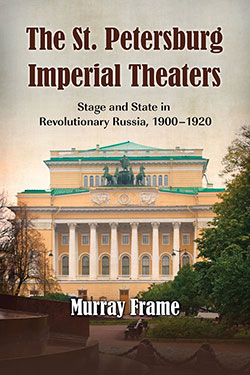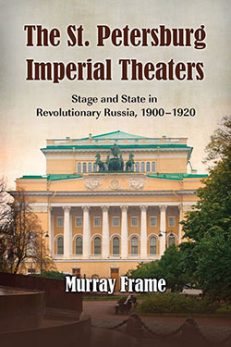The St. Petersburg Imperial Theaters
Stage and State in Revolutionary Russia, 1900–1920
Original price was: $39.95.$31.99Current price is: $31.99.
In stock
About the Book
The opulent St. Petersburg Imperial Theaters were subsidized and administered by the Russian court from the eighteenth century until the collapse of the tsarist order in 1917. This close association raises many questions about the uses of these theaters and where their loyalties lay in early twentieth century Russia.
This history begins in 1900 with the theater flourishing but undergoing change, then chronicles the impact of war and revolution, as well as audience and administration, leading up to the effective re-establishment of state control over the theaters by the Bolsheviks in 1920. While the theaters were often allied with the forces of change, their grandeur harked back to the age of the tsars, creating an irony that is explored here in depth. Photographs and diagrams of the theaters are included, along with photographs of the central historical figures, and contemporary cartoons referring to the theaters.
About the Author(s)
Bibliographic Details
Murray Frame
Format: softcover (6 x 9)
Pages: 224
Bibliographic Info: 18 photos, diagrams, appendix, notes, bibliography, index
Copyright Date: 2009 [2000]
pISBN: 978-0-7864-4330-7
eISBN: 978-1-4766-0805-1
Imprint: McFarland
Table of Contents
Acknowledgments ix
A Note on the Technical Apparatus x
Preface 1
Introduction 5
1. “The Emperor’s Theaters” 19
2. The Directorate and the Artists 44
3. The Audience 65
4. The Alexandrinsky Repertoire, 1900-1917 85
5. The Mariinsky Repertoire, 1900-1917 105
6. The 1905 Revolution and Its Aftermath 119
7. War, Revolution, and the Provisional Government, 1914-October 1917 136
8. Under the Bolsheviks, October 1917-1920 153
Conclusions 172
Appendix of Titles 177
Bibliographical Note 181
Chapter Notes 185
Index 207
Book Reviews & Awards
“useful”—Choice; “thoroughly researched and concisely written”—Slavonic and East European Review; “a unique and valuable contribution”—Russian Review; “clarifies and quantifies the place of the Imperial Theaters in St. Petersburg society before, during, and immediately after the Revolution”—Russian Theatre Past and Present; “offers relief from the surfeit of monographs that focus obsessively on a handful of avant-garde actors, directors, and playwrights prominent during the Silver Age”—Slavic Review.





